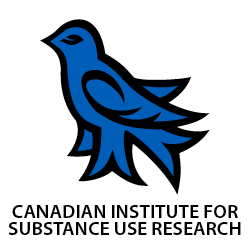Research with gay and bisexual men (GBM) in North America shows two distinct substance-use patterns related to sexual behaviour: 1) recreational drugs like methamphetamines, ecstasy and ketamine used to increase sexual pleasure; and 2) drugs ingested to enhance sexual performance, including erectile dysfunction drugs (EDD) like Viagra® , as well as amyl nitrates, or poppers.
For the purpose of this blog, we will focus on the enhancement-drug pattern, as EDD and poppers are associated with anal intercourse among GBM. For example, in Vancouver’s Momentum Health Study for GBM, participants reported on substance use within two hours before or during sex for up to five of their last sexual partners. Initial analysis of this event-level data provides the clearest link between substance use and sexual behaviour. For example, insertive anal intercourse was almost three times more likely to occur with EDD relative to receptive anal intercourse. Poppers, which relax vascular smooth muscles, were almost two times more likely to accompany receptive anal intercourse than insertive intercourse.
Both drugs have a history in HIV studies. Pfizer, the pharmacological maker of Viagra®, successfully defended itself from lawsuits claiming that recreational use of Viagra® “caused” HIV/AIDS among San Francisco GBM. Poppers, originally developed as angina treatment, were so strongly associated with initial North American GBM HIV/AIDS cases that the disease was originally called GRID, standing for “Gay Related Immunodeficiency Disease”. Today, both drugs remain important factors in HIV epidemiological research, with analysis of the large US Multicenter AIDS Cohort showing EDD and popper use, singularly, or in conjunction, significantly increase the probability of HIV sero-conversion.
Despite these similarities, EDD and popper availability differs today. EDD are readily available and increasingly used recreationally by North American straight and GBM. In contrast, because of their psychoactive properties, poppers are increasingly restricted in North America.
Because Momentum is a longitudinal study taking place over a five-year period, we can look at patterns around EDD and popper use for Vancouver GBM. This blog invites discussion about their use and availability. For example, we know that some GBM regret recent Canadian restrictions on poppers, whose muscle relaxing properties may act as HIV harm reduction by reducing tearing of delicate rectal tissue, an event associated with HIV transmission.
We want to hear from you about these issues.
Author: Dr. Eric Roth, Scientist, Centre for Addictions Research of BC; Professor, Department of Anthropology, University of Victoria
**Please note that the material presented here does not necessarily imply endorsement or agreement by individuals at the Centre for Addictions Research of BC

